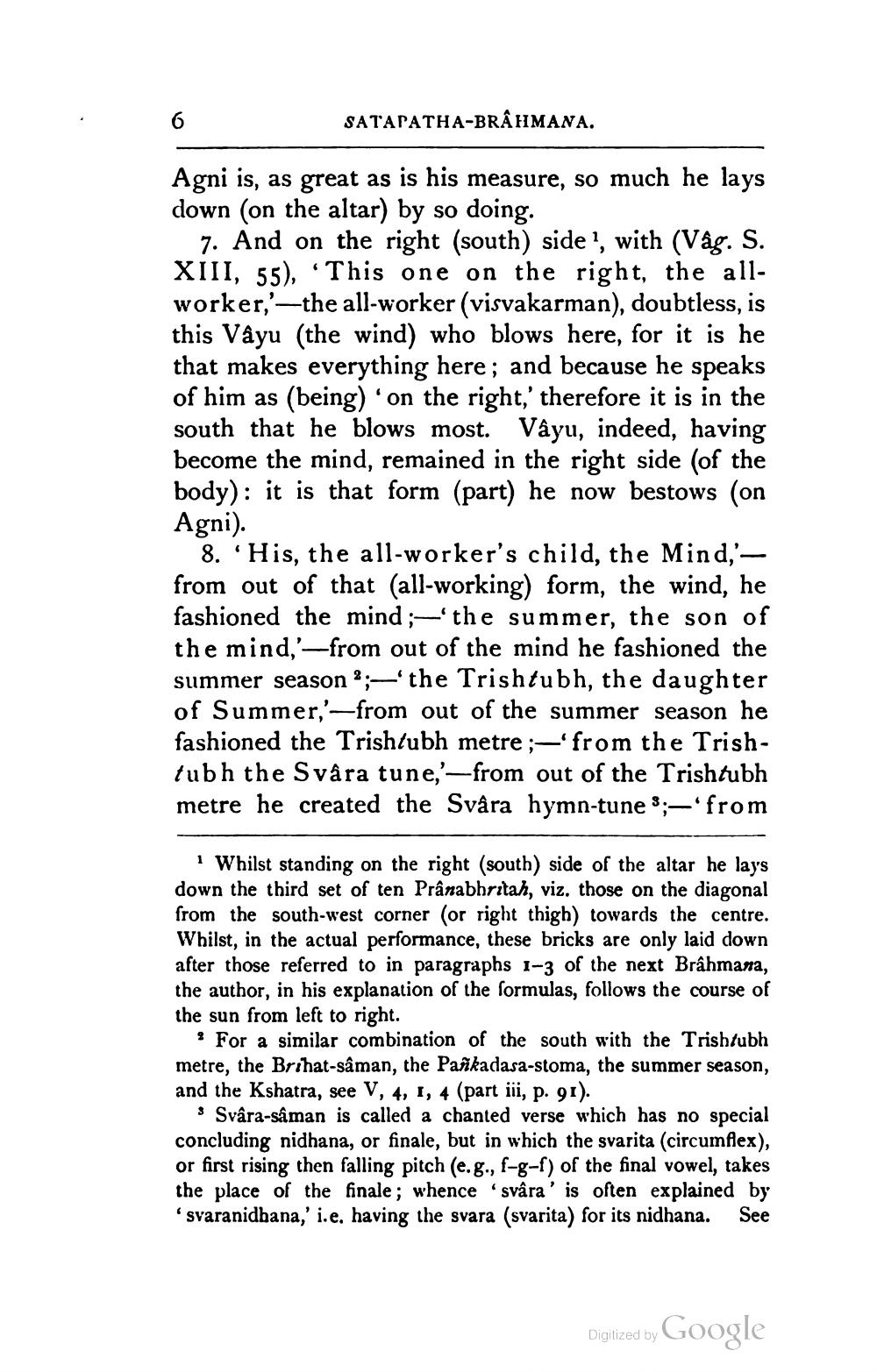________________
SATAPATHA-BRAHMANA.
Agni is, as great as is his measure, so much he lays down (on the altar) by so doing.
7. And on the right (south) side !, with (Våg. S. XIII, 55), “This one on the right, the allworker,'—the all-worker (visvakarman), doubtless, is this Vâyu (the wind) who blows here, for it is he that makes everything here; and because he speaks of him as (being) 'on the right, therefore it is in the south that he blows most. Vâyu, indeed, having become the mind, remained in the right side (of the body): it is that form (part) he now bestows (on Agni).
8. His, the all-worker's child, the Mind,'— from out of that (all-working) form, the wind, he fashioned the mind;—the summer, the son of the mind,'—from out of the mind he fashioned the summer season 2;—'the Trishtubh, the daughter of Summer,'—from out of the summer season he fashioned the Trishtubh metre ;-'from the Trishtubh the Svåra tune,'—from out of the Trishtubh metre he created the Svâra hymn-tune 3;— from
1 Whilst standing on the right (south) side of the altar he lays down the third set of ten Pranabhritah, viz. those on the diagonal from the south-west corner (or right thigh) towards the centre. Whilst, in the actual performance, these bricks are only laid down after those referred to in paragraphs 1-3 of the next Brahmana, the author, in his explanation of the formulas, follows the course of the sun from left to right.
? For a similar combination of the south with the Trishubh metre, the Brihat-sâman, the Pankadasa-stoma, the summer season, and the Kshatra, see V, 4, 1, 4 (part iii, p. 91).
Svâra-sâman is called a chanted verse which has no special concluding nidhana, or finale, but in which the svarita (circumflex), or first rising then falling pitch (e.g., f-g-f) of the final vowel, takes the place of the finale ; whence 'svâra' is often explained by svaranidhana,' i.e, having the svara (svarita) for its nidhana. See
Digitized by Google




